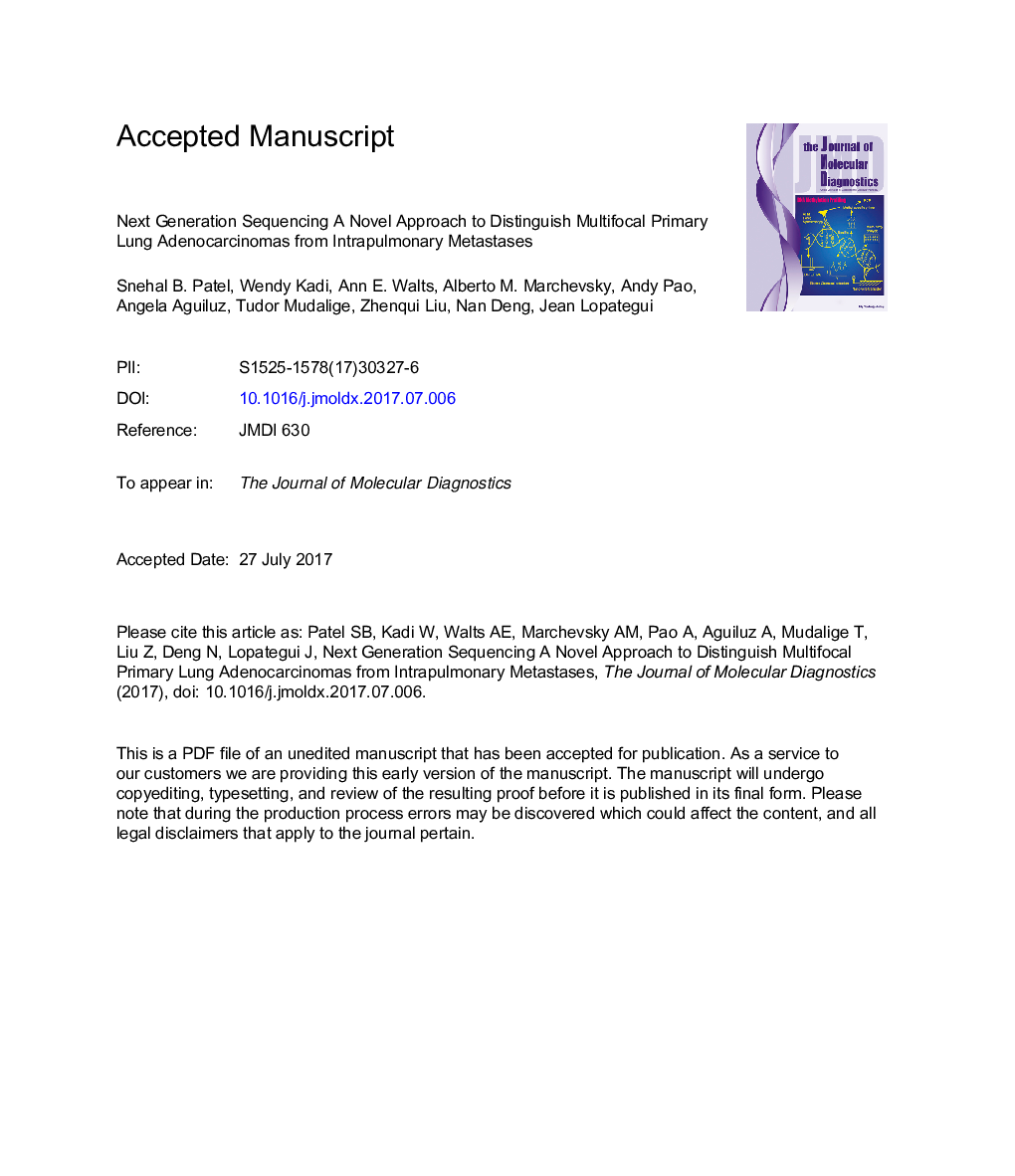| Article ID | Journal | Published Year | Pages | File Type |
|---|---|---|---|---|
| 8733456 | The Journal of Molecular Diagnostics | 2017 | 46 Pages |
Abstract
Distinguishing between multiple lung primary tumors and intrapulmonary metastases is imperative for accurate staging. The American Joint Committee on Cancer (AJCC) criteria are routinely used for this purpose but can yield equivocal conclusions. This study evaluated whether next-generation sequencing (NGS) using the 50-gene AmpliSeq Cancer Hotspot Panel version 2 can help facilitate this distinction. NGS was performed on known primary-metastatic pairs (8 patients) and multiple lung adenocarcinomas (11 patients). Primary-metastatic pairs had high mutational concordance. Seven pairs shared mutations, and 1 was concordant for having no mutations. Driver mutations in KRAS (n = 4), EGFR (n = 2), and BRAF (n = 1) were always concordant. Multiple lung tumors from 3 patients were completely concordant and predicted by NGS to be intrapulmonary metastases, whereas 8 had completely discordant mutations and were predicted to be independent primary tumors. The NGS prediction correlated with the AJCC (eighth edition) prediction in all patients for whom the latter was unequivocal (8 of 11). Furthermore, it separated patients by overall survival. Patients with predicted multiple independent primary tumors by NGS had better survival than those with distant metastases (PÂ =Â 0.016, log-rank test), whereas those with predicted intrapulmonary metastases had no difference (PÂ =Â 0.527). With further validation, the 50-gene panel has the potential to serve as an adjunct to the AJCC criteria.
Related Topics
Health Sciences
Medicine and Dentistry
Health Informatics
Authors
Snehal B. Patel, Wendy Kadi, Ann E. Walts, Alberto M. Marchevsky, Andy Pao, Angela Aguiluz, Tudor Mudalige, Zhenqui Liu, Nan Deng, Jean Lopategui,
